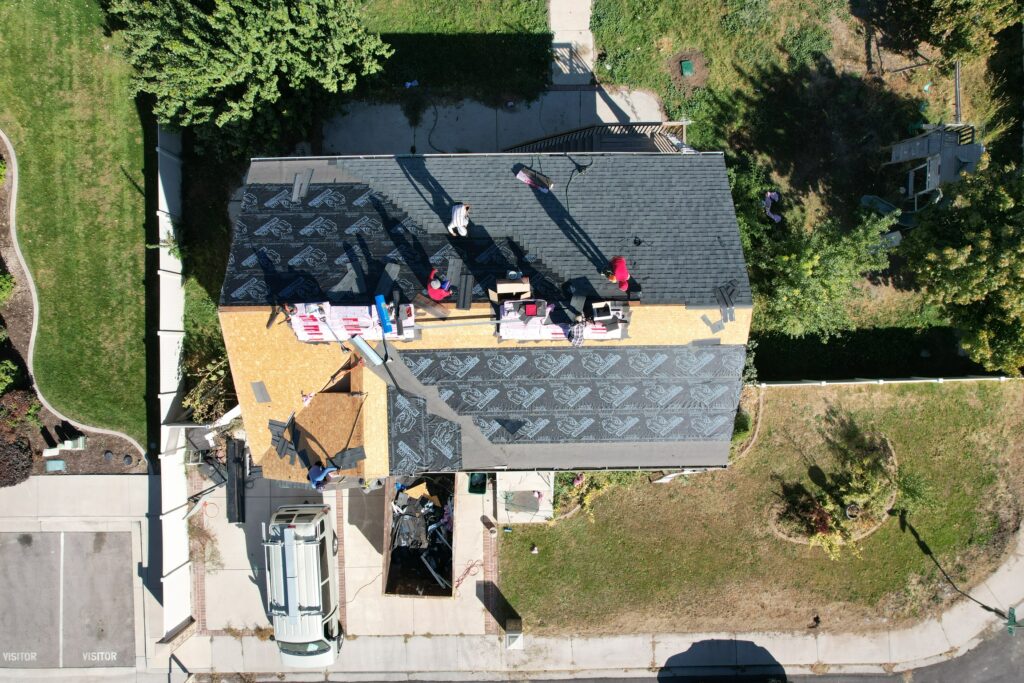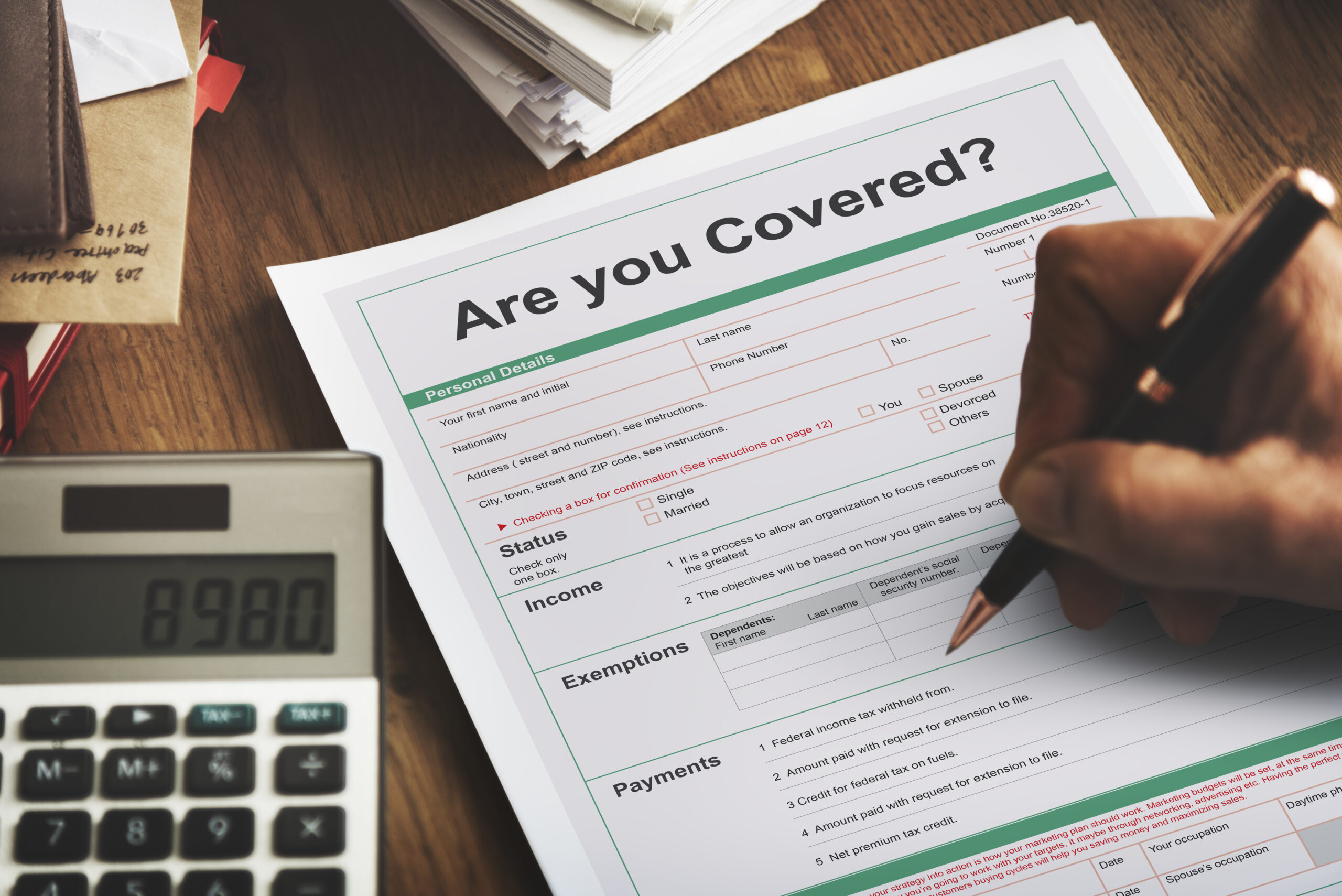If you spot any damage to your roof, you should file a homeowners’ insurance claim to minimize any unprecedented expenses. However, it can be difficult to know where to start. If you fail to follow the correct procedures when making a roof replacement claim; the claim may be denied due to an administrative mistake. This begs the question, how do you obtain insurance to cover the cost of a new roof?
In this guide, you’ll learn the step-by-step process for obtaining insurance to pay for roof replacement, along with the circumstances under which the roof replacement is likely or unlikely to be covered by insurance.
Follow these steps for a Roof replacement insurance claim
Step 1: Examine Your Insurance Policy
As soon as you realize your roof has been damaged, check your homeowners’ insurance for roof coverage. This will also help guide your financial decisions concerning roof repairs. You can also ask your insurance company for a copy of the policy.
Most insurance companies provide two kinds of roof insurance: replacement and repair coverage. Replacement coverage covers the cost of replacing a damaged roof, while repair coverage often compensates the house owner for a percentage of the repair costs.
These types of insurance are more exorbitant and make filing a claim more complex. As a result, it’s crucial to record the damage incurred and make a claim as soon as possible.
You should contact your insurance broker for further information should you have any queries concerning your roof policy.
Step 2: Demonstrate That Your Roof Is Damaged
Take photographs of the damage before filing a roofing claim. Your images should show the exterior damage to the roof and any interior damage. If possible, use a ladder to take close-up images of the roof damage.
Record the time and date when the damage occurred in addition to taking photographs of the roof. Take multiple shots of the tree from the ground to indicate where it fell if a tree caused your roof damage.
Step 3: Research Local Regulations and Building Codes
When researching local construction codes and regulations, you must also acquaint yourself with any additional requirements specific to your location.
These might include noise pollution limits, energy efficiency ratings, fire safety regulations, or other environmental or public health issues. Understanding these guidelines before beginning a project is critical so that you do not face fines for non-compliance.
Step 4: Get the Permits and Inspections Required By Law
In addition to studying local building standards and laws, it is crucial to get any proper licenses or inspections required by law before commencing work on your roof replacement.
Depending on where you reside, this may entail acquiring a permit from city hall or having an inspector come out after the project is completed to ensure that everything was done following code standards.
If these actions are not completed by the previous construction start date, significant delays may emerge during the inspection period, which may have been avoided.
Step 5: Submit an Insurance Claim
Filing a claim is the last step in getting your insurer to pay for your roof replacement. Throughout this procedure, you should keep track of any communication and evidence of damage.
You will make a roofing claim with the assistance of your insurance agent. Include photographic documentation from either you or the roofing contractors. Be sure to act quickly after a storm since your insurance provider may need help distinguishing between storm damage and irresponsible maintenance if you wait too long to make a claim. You want to take advantage of the coverage you’re entitled to.
Step 6: Hire the Best Roofing Contractor
Once your claim has been granted, you are free to use any local roofing contractor you wish. When looking for one in your region, be sure they have expertise in insurance claims.
Hiring a roofing contractor that handles insurance work routinely means they understand the insurance claim procedure, how to read your claim, add any missing information, and do the job under your insurance company’s coverage. They can also protect you from unintentionally committing insurance fraud.
Unlike retail replacements, when shopping for roofing services for an insurance claim, there’s no incentive to acquire many estimates to get the lowest price. So, start with someone you trust with expertise in managing claims and work your way up.
Step 7: Complete Repairs and Replacements by Code Requirements
Before commencing any replacements or repairs on your roof, you must examine local building rules and regulations to guarantee compliance with all laws and regulations in your region.
This includes knowing the materials’ standards and any constraints that may be put on the type of work that can be done. Certain roofing operations may require specific permissions in some locations, such as replacing or re-roofing a whole roof system.
When Does Insurance Cover Roof Replacement?

- If a tree destroyed the roof: If a neighboring tree falls due to circumstances beyond your control, your house insurance should cover you. You may even be covered for the expense of the tree removal, depending on your coverage.
- Extreme weather: This is the most likely reason you’d need to repair or replace your roof; insurance will usually cover everything. If a large storm or other unusual weather destroys your roof, you are nearly always insured.
- Sudden unintended damage from “acts of God”: If a comet lands on your roof, a riot breaks out and damages your roof, or a wind storm blows debris through the ceiling, the insurance company will pay for it. Any type of unanticipated risk or random harm that no one could have predicted is generally covered.
When Is a Roof Replacement Unlikely to Be Covered by Insurance?
- You failed to perform the necessary maintenance: When you haven’t had your roof inspected, fixed, or maintained throughout the years, the insurance company may fault you for the roof damage.
- Your roof is between 20 to 25 years old and beyond: Roofs are usually changed every 20 to 25 years; it should be no surprise that this is when house insurance companies conveniently cease covering the roof.
- Your policy has expired or lapsed: Nothing will be covered if you do not pay your house insurance or if your policy expires and you do not renew it.
- Your insurance does not cover the type of damage: Every house insurance coverage is unique, and some damages may or may not be covered based on the specific policies you negotiated when you initially purchased the policy.
- Claims submitted too late: Most house insurance plans state that a claim must be made within a reasonable time frame and that damaged items must be replaced within 365 days of the date of damage.
If you decline or fail to notify your insurance company in writing before the 12 months expire (along with a reasonable explanation for the delays and a petition for an extension), they will almost certainly deny your claim.
Insurance evaluations following suspected damage are often provided at no cost to the homeowner. Avoiding a rejection due to timing is as simple as organizing a meeting and an inspection with your preferred contractor. - Manufacturers defect: While manufacturers try to maintain quality control on their products, faulty materials occasionally find their way onto your roof and degrade well before the specified life expectancy. If it is proven that a manufacturing flaw caused your roofing system to fail, your home insurance company will not cover replacement expenses. However, practically all major manufacturers of roofing goods have a standard, limited warranty supplied with the purchase of their products.
Preventing Roofing Issues
The property owner must take proper care of and maintain their roof while also being aware of the life duration of different materials, ranging from 15 to 100 years. Other precautions homeowners may take to safeguard their roofs include contacting competent specialists for regular inspections. Most roofing contractors will check a roof for free.
Check that your roof is debris-free and does not hold or gather water. Any trees hanging over the roof or touching it should be cut down. Always inspect your roof after a major storm or a prolonged snowfall to see how the gutters and shingles are faring. If you live in a windy location, ensure your house and roof meet current construction requirements.
Endnote
Getting your insurance carrier to cover a complete roof replacement is more complicated than it appears. Most home insurance companies need their customers to go through a series of stages that begin with roof insurance claims.
Unfortunately, without a prior understanding of your policy or how homeowner’s insurance works, the procedure can be confusing, time-consuming, and challenging to manage. Fortunately, we’re here to assist.
Have a damaged or broken roof in Utah or Arizona? Do you need to make an insurance claim? MTM Roofing can help you with your roof replacement and repair requirements. Please contact us for a complimentary, no-pressure, professional estimate today if you need any industrial, residential, or commercial roofing services.






